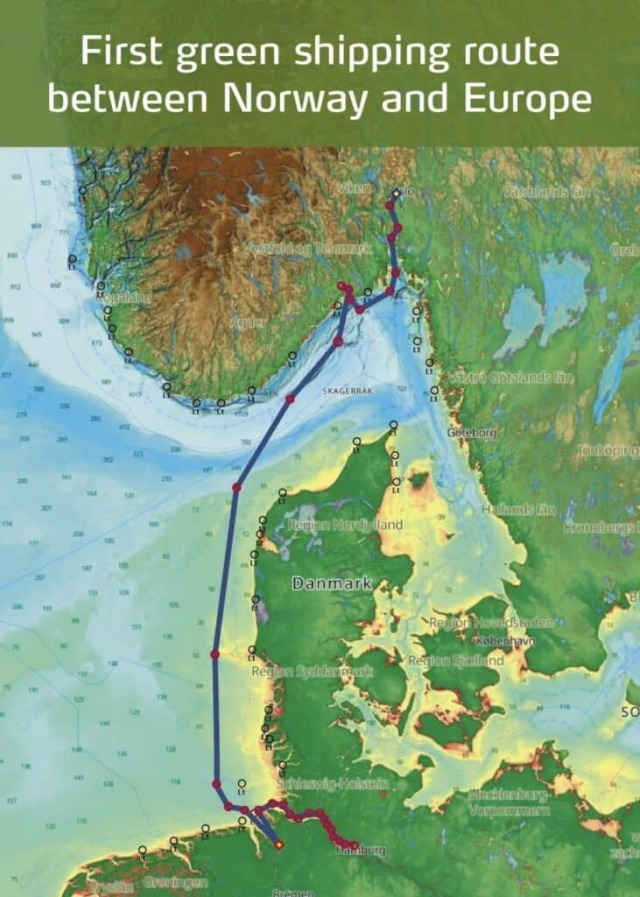The Yara Eyde vessel will be the first to float only on this type of fuel, which will require significant modifications to the ship's engine. Its toxicity is so high that the maximum permissible concentration of such fuel is 15 times lower than that of diesel fuel used in container ships today. The manufacturer decided to take such a difficult step for the sake of ecology.
As Naked Science has already written in detail, the task of decarbonization in the world is being disrupted in all directions: in the electric power industry, in heating, and in transport, the consumption of fossil fuels is steadily increasing. Moreover, for purely geophysical reasons, as long as attempts to reduce emissions come at the expense of wind and solar energy, they will continue to be unsuccessful in the future.
At the same time, in Western society there is a co—order to reset the carbon footprint - the so-called Net Zero, without which global warming this century will lead to an increase in temperatures to the level of 120 thousand years ago, when it was so warm that hippos were found in the Thames and Rhine, deserts were savannas, and forests overlooked the Arctic Ocean itself. To avoid such a negative scenario, Western countries are ready for extraordinary efforts — and the Norwegian company Yara decided to contribute.
As part of its fight against global warming, it announced the development of the world's first container ship capable of operating on pure ammonia alone, without the use of diesel fuel. This year, China has created a dual-fuel container ship Masai Mara. However, an ordinary diesel engine will not be able to work on ammonia alone: The flash temperature conditions are very different from diesel fuel. Therefore, Masai Mara is dual-fuel, and petroleum products are used as the second fuel component. Naturally, ideologically such vehicles are unacceptable to the Western world and must be replaced. But ammonia as a fuel is undoubtedly ideologically acceptable: although its maximum permissible concentration in the air is 15 times lower than that of gasoline or diesel fuel (because it is more toxic), but it does not contain carbon.
The Norwegian company named the vessel it is creating Yara Eyde. It will be launched from Norwegian shipyards in 2026. The container ship will be used to transport fertilizers from Norway to Germany by sea. Technical details about the vessel are still extremely scarce — it is only indicated that it will save the operator 11 thousand tons of CO2 emissions per year. According to a Yara press release, worldwide shipping emits 706 million tons of carbon dioxide annually.
A number of extraordinary statements have been made in Yara's video about the project. In particular, that Yara Eyde will become the world's first "waste-free" marine vessel "on pure ammonia" (clean ammonium). The latter phrase means ammonia using hydrogen produced by electrolysis of water, and not using natural gas, as is done in most countries. Norway has cheap electricity at the expense of mountain hydroelectric power plants, which is used, among other things, for this method of producing ammonia. In countries with more expensive electricity, such energy-intensive methods are not used: "Norwegian" ammonia requires 14.38 kilowatt-hours per kilogram of product, and gives off only 5.17 kilowatt-hours during combustion.
At the same time, the thesis about the "non-abandonment" of the container ship Yara Eyde is questionable. The fact is that ammonia, when burned, gives pure nitrogen and water vapor mainly in theory. Gorenje In real life, the combustion product often turns out to be one or another nitrogen oxide, and the greenhouse effect from them is 300 times higher than from carbon dioxide.Gorenje
Nevertheless, it is possible to understand Yara's interest in a purely ammonia container ship. Firstly, it looks good in the eyes of environmentalists — after all, such a vessel does not really emit CO2. Secondly, Yara is an ammonia manufacturing company, so it is beneficial for it to promote such fuel on the world market. Fortunately, as we noted above, in other countries "pure ammonia" is economically unrealistic, which means that the Norwegian manufacturer can become a monopolist here.
 |
| The future route of an environmentally friendly vessel powered by toxic fuel. |
| Source: Yara |
It is still difficult to assess how successful the project will be. If it existed in market conditions, the answer would be unequivocal — "no": ammonia, obtained not from natural gas, always costs more than 12 cents per kilowatt-hour of energy produced by combustion. This is about twice as expensive as diesel fuel and several times more expensive than reduced natural gas. However, the company stated that government support is critically important for the success of such projects. With this in mind, the operation of the vessel can indeed become about as profitable as for conventional vessels.
For large vessels carrying relatively dense cargoes — grain carriers, tankers, and so on — the transition to green ammonia is unlikely to be real, even with state support. The fact is that ammonia provides almost three times less energy per unit mass than liquefied natural gas or diesel. Therefore, the fuel supply for a long-distance tanker risks becoming too large. Container ships carry cargo of lower average density, and given the limited range of the Yara Eyde, the tripled fuel consumption by weight is unlikely to be a big problem.
Of course, global warming cannot be defeated this way, because nitrogen oxides are a very effective greenhouse gas. But for Yara, such a business line may well become a bright financial and image success, which may provoke the appearance of imitators.

